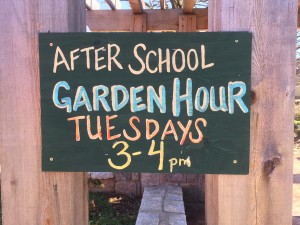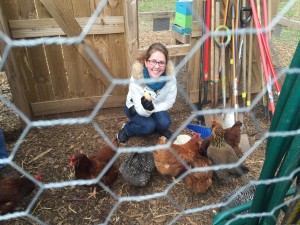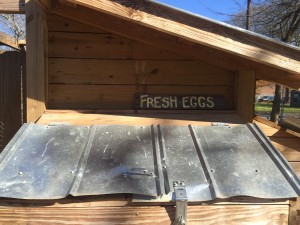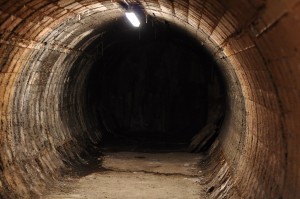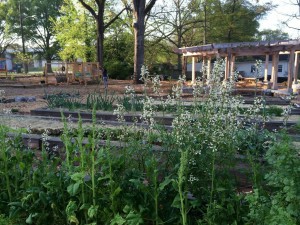The ECLG offers a time where elementary and middle school students can learn about how to grow their own food. In an urban environment like Atlanta, these children may not have ever had the opportunity to be exposed to how fresh, healthy foods are grown. The Garden Hour gives children the chance to become educated and excited about vegetables!
Monthly Archives: February 2016
External Environment Description 1
Image
Upon my first visit to the Edgewood Community Learning Garden (ECLG), I was interested in the “fresh eggs” sign. The eggs are not sold but are given away to community members that want them. Families living in poverty around this area are given a fresh, free source of protein, and this makes a huge statement to what the ECLG stands for. On my second trip there I met with the ECLG manager, and I was allowed inside the coup to feed the chickens and to anylize the quality of the eggs.
Annotated Bibliography 3
“Edgewood Community Learning Garden”. The Wylde Center. Clifton Farm. 2013. Web. 5 Feb. 2016. <http://wyldecenter.org/edgewood-community-learning-garden/>.
It is important that I have the direct information about the Edgewood Community Learning Garden (ECLG) for this paper. I have emailed the Garden Manager to get some answers to my questions that were not posted on this site. However, this article is helpful because I now know that it has a system setup for volunteers which gives me the impression that the ECLG is easily accessible to the entire community. Having the presence of the Garden accessible to children growing up in this urban environment is important so the children can see first hand how cool healthy foods can be. I would like to know if the food grown here is available for the children to eat, because so often, vegetables are expensive and in short supply in urban areas. The ECLG has the opportunity to educate children about healthy eating and how they can grow the food themselves. I hope to incorporate what the manager says into the paper to analyze how the garden has changed the community, who has access to it, and why it was built there.
Annotated Bibliography 2
Leventhal, Tama, and Jeanne Brooks-Gunn. “The neighborhoods they live in: the effects of neighborhood residence on child and adolescent outcomes.” Psychological bulletin 126.2 (2000): 309. Last accessed February 4, 2016. http://www.gxe2010.org/Speakers/pubs/Brooks-Gunn_2000a.pdf
While I was visiting the Edgewood Community Learning Garden, I arrived at the time when the elementary students were just dismissed from school. A small group of students walking home from school were curious about what I was doing and joined me in the Garden. During my conversation with them, I became curious about studies that were done about how children are affected by living in poor neighborhoods, living near a public park, or living in an area that has undergone gentrification which is evident in the Edgewood neighborhood. This article explores a little of that by explaining that “youth who moved to the more affluent suburbs were more likely to stay in school, to be in college preparatory classes, and to go on to college than their peers who remained in the city” (Leventhal, Tama, Brooks-Gunn). I believe statistics like these are known by the general public, but I would like to explore why this happens. They mention that families living in poverty tend to have only one parent present and while that parent is at work, the children do not have sufficient instructive care. If I can find enough information in conjunction with this article, I would like to explore how the way these children grow up affects the future of urban neighborhoods. If I can develop a broad idea of this, I may be able to find correlations to the Garden and the neighborhood surrounding it.
Annotated Bibliography 1
Aka Jr, Ebenezer O. “Gentrification and socioeconomic impacts of neighborhood integration and diversification in Atlanta, Georgia”. NATIONAL SOCIAL SCIENCE JOURNAL Volume 35# (2010): 1. http://nssa.us/journals/2010-35-1/2010-35-1-01.htm. Last Accessed February 2, 2016.
This article introduces an interesting word that I may incorporate into my paper: gentrification. It is defined as “the upward change in land use to middle and upper income residential (Keating, 2003)” (Aka). This word changes the way I thought about poverty stricken versus rich areas. In some areas the city is not only making it more difficult for poor people to travel and to access the commodities for daily life, but the selection of living space for people in poverty is decreasing do to middle class families renovating homes to raise the property value. After renovations, the poor can no longer afford these homes and are therefore left with fewer places to live. In addition, when property value goes up, so does property tax which the poor cannot afford. On the other hand, “as property taxes and sales tax revenues increase, the education provided in local public schools improves, the provision of public services becomes greater, and the overall quality of life is improved” (Aka). It may be argued that the good outweighs the bad, but I can delve deeper into the controversy for my paper. The article also discusses the Edgewood neighborhoods which will help understand the area where the Edgewood Learning Garden is located. This scholarly source also provides graphs, maps, and tables that may be of use to me.
Architectural Exclusion Summary
In the “Architectural Exclusion: Discrimination and Segregation Through Physical Design of the Built Environment”, Sarah Schindler discusses the controversy between architectural structures and racism. She argues that structures such as bridges, fences, walls, etc. are made to separate poor/colored people from rich/white people. The architects of these designs argue that these structures are put there to divert traffic and minimize crime. However, Schindler argues that these are simply excuses they are giving in order to make their new residencies more attractive and to allow the property value to climb. The architects do this to maximize profits, but in the process, they are making the lives of poor/colored people much more difficult.
The majority of the time, these inequalities are being overlooked by judges because this barrier could potentially bring more money into the city where this new “privileged” community is able to thrive. Because the people making these decisions will be benefitting from this new community, they refuse to fight for the civil rights of those being negatively affected by these new barricading structures. For example, the Federal Housing Administration (FHA) and the Department of Housing and Urban Development (HUD) not only supported but initiated the plan to build fences and walls in order to keep crime out of the area. The fence doubled the travel distance to the nearest grocery store for the non-gated community members, and it took approximately two hours for them to reach the store.
A large number of poor people rely on public transportation. These people depend on public transit like buses, subways, and light rails, but bridges were being built lower so that buses could not pass underneath. Because of this, they were restricted from going to the public parks and other public places in order to keep these areas predominantly white. These transportation systems are all regulated by the city. Therefore, the city controls where new tracks are built-or not built. Many times, these systems are not constructed in the most helpful way to its users because the city in intentionally keeping them out of certain areas. Due to this inconvenience, people may try to get to their destination on foot. However, those that decide it may be easier to do so will find just as much trouble. Because of the lack of sidewalks, this walk to work becomes a dangerous trek. Honking cars that rush by throughout the day cannot swerve out of their lanes to make room for the pedestrian. These tragic accidents could have been prevented by providing a safe way for all citizens to travel.
The inequalities discussed in this article are unjust as Schindler proves. There is much to be improved within this system, but it may not ever be perfect because in the real world, every decision is centered around profit. Schindler makes valid arguments in her article, and does a great job fully educating the reader on this pressing and ongoing issue. This article could quite possibly spark a movement and changes may be made, but, until then, profit will trump equality.
Tapestry of Space Summary
“Tapestry of Space: Domestic Architecture and Underground Communities in Margaret Morton’s Photography of a Forgo en New York” by Irina Nersessova is an article about the psychogeography of homeless people. She discusses the connection that New York’s homeless have with the abandoned tunnels that were once used for public transportation, and delves into the emotion of the subject instead of solely focusing on numbers.
The most striking point that Morton makes when talked about in Nersessova’s article is that homeless people do, indeed, have a home. They can have a place where they feel safe and protected. However, homeless people are without a home that they can fully rely on. The tunnels have provided a sanctuary for many homeless because they are less likely to be in danger than if they were sleeping above the tunnels. Above ground is like a whole other world. It is a place of danger, death, and pain. Although this is true, most people above ground would never go into the deep, dark, abandoned tunnels, but Nersessova writes, “The absolute darkness of the tunnel prevents danger from entering it, which explains how it is possible to have the highest feeling of safety in a place that is perceived as most dangerous” (31). The homeless have to ignore their fear when they are searching for a safe place to rest. Those that are brave enough to face going into the tunnels for the first time can find a Utopia there. They can sleep without fear of being mugged, and they have a safe place to hide their valuables, and a quiet place to find themselves.
Although many homeless people do find safety in the tunnels, that sense of protection can be taken away in an instant. The police have the power to kick the homeless out of their safehouse. This boot back onto the streets is one hardship that the homeless population unfortunately has to face over and over again in their lifetimes. It can only be imagined how they must feel to lose the only protection that they have. The homeless had transformed the tunnels into their own personal space by creating art on the walls and constructing beds out of materials that represent the “splintered identity’s attempt to conform to the notion of a unified and solid self” (26). For the first time in a long time, they created a place for themselves where they did not have to worry about making it through the night. It is unbearable to think that the homeless are so coasted out from society that they are kicked out of places that no one even wants anymore.
A photographer that document the homeless and their experiences is refered to as flâneur. This flâneur is simply there to observe and take in their surroundings. They are described as being attentive to detail and easily distracted as to follow only the most captivating stories. The flâneur is thought to see the world as more than most people do. He can see the beauty when most see dirt, and he can follow the slightest detail that most otherwise would not have noticed. They are without fear as they approach strangers for interviews and explore dark tunnels for the next great shot.
It is so important to not lose touch with this story. It is easy to think of homeless people as inferior, but, in fact, they deserve no less than everyone else. They are treated like criminals for being homeless, but the setbacks that come from them being thought of as criminals (like getting locked out of the tunnels) makes it even harder on them to get back on their feet.
Edgewood Community Learning Garden
Image
This is a picture of the greenery of the Edgewood Community Learning Garden. The photographer captures the beauty and life of the area to convince people to visit the garden themselves.
Uploading Assignments
How do I upload my assignments to my blog for submission?

